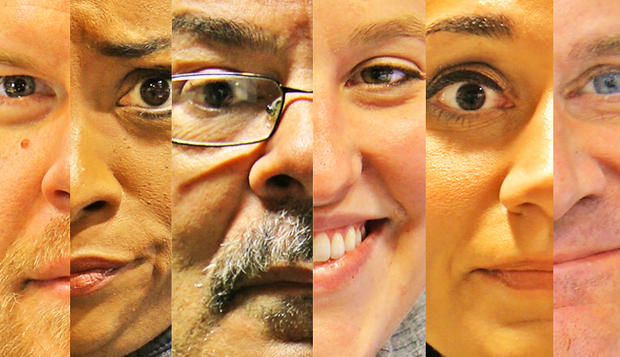Good Question: What Do Our Faces Say About Us?
MINNEAPOLIS (WCCO) -- Our facial expressions say a lot about what we're really thinking -- even more than what comes out of our mouths.
According to one study, our expressions give away 55 percent of our communications, while words account for only seven percent.
So, what do our faces say about us?
"The face is the only place on the body where the muscles attach right to the skin," says Dan Hill, a nationally-known facial coding expert. "It's quick, real-time data. You give away who you are."
Hill, who has worked with sports teams and corporations, says he looks for 23 different expressions that can tell seven core emotions: happiness, surprise, sadness, fear, anger, disgust and contempt.
He finds two-thirds of muscle movements are around the mouth, but it's often the eyes that offer even more information.
"The best stuff is around the eye because you have a hard time controlling it," he says.
He says lips pressed together can show anger, a wide eye can show fear or surprise and an inner eyebrow arch can demonstrate sadness.
Some expressions signal a single emotion, while others will demonstrate two or three. Experts have to figure out how the entire facial expression works together.
The smile can demonstrate happiness. That's part of what Hill was looking for when he helped the Milwaukee Bucks draft Jabari Parker in 2014. The team was looking for stability, which Hill associated with a moderate level of happiness, which could be determined partly by the level of smile.
"Does that smile go to a low degree, just a whisper of a smile? Does it get to the eyes as it moves up the elevator? Do I get to the penthouse, which is the joy expression, or am I down in the basement with what I call the 'acceptance smile'? The barely there, very brief, one side of the face only, unilateral smile?" he said.
Most expressions last between one and two seconds. Some, called micro expressions, can be as short as one-fifth of a second.
In the past, Hill predicted with 100-percent accuracy the chances of a second date during speed dating. He says a brief upper lip flare by a woman showed disgust, while the man she talked with didn't even notice.
The science of facial coding has been around since Charles Darwin. The research was pioneered by psychologist Paul Ekman in the 1970s, when he spent 15 years figuring out which muscle movement corresponds with which emotion.
Ekman even traveled to Papua New Guinea to watch people who had never been exposed to Western culture. He found facial expressions cross cultural lines.
Hill is now writing a book about celebrities. In it, he finds Kim Kardashian's facial smirks demonstrate contempt.
He also points out Cary Grant, who comes off in his roles as sophisticated in his movie roles, but privately showed a lot of fear.




